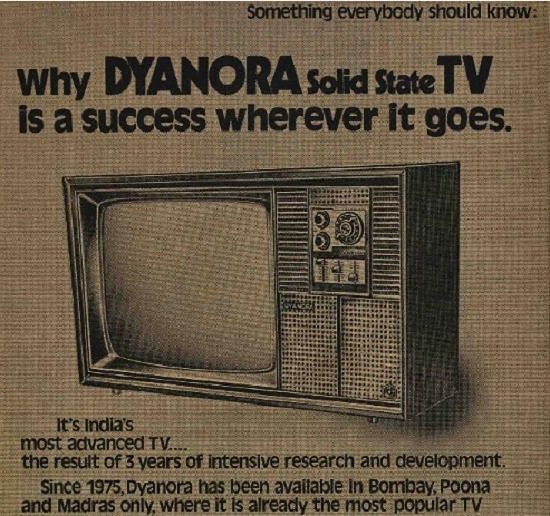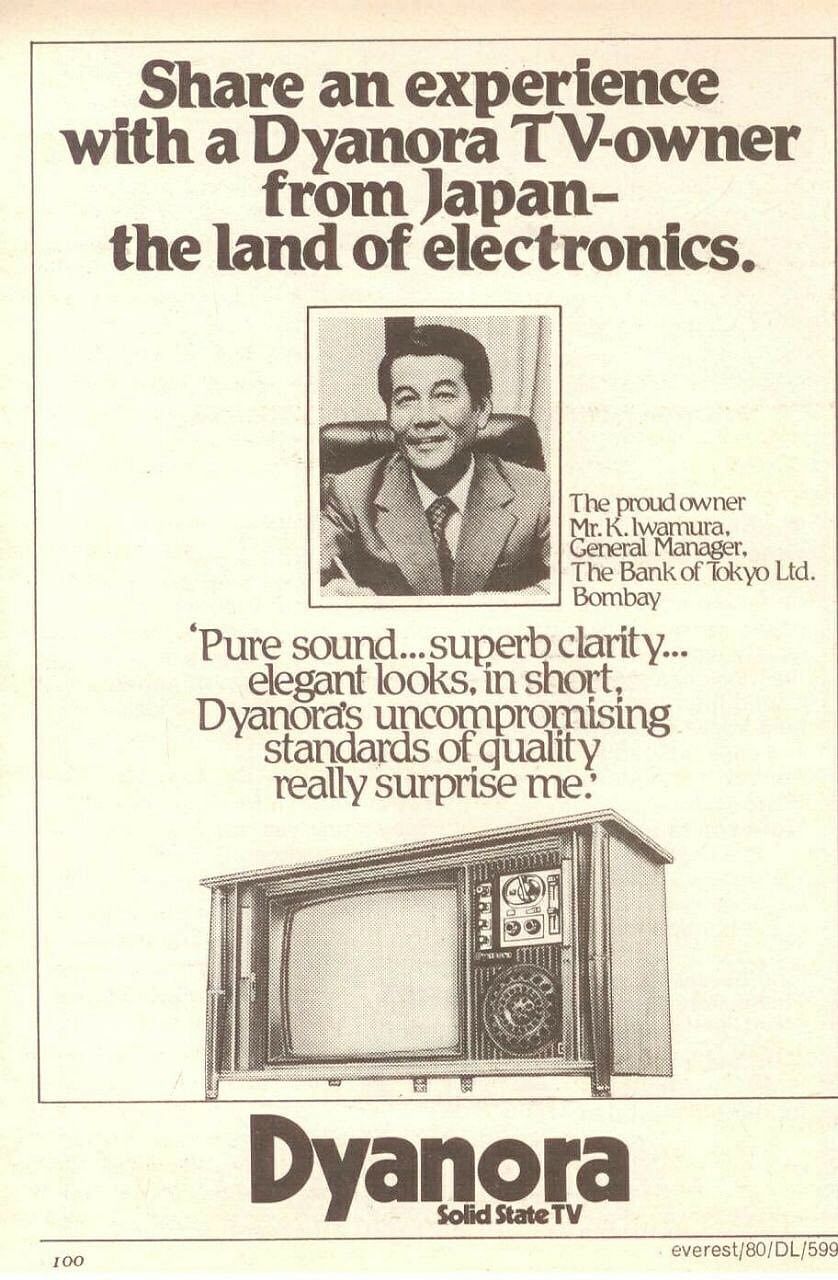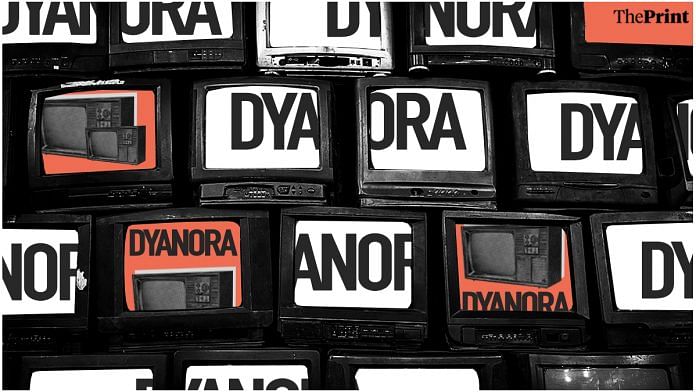New Delhi: A wooden box with shutters on both sides and multiple knobs for features such as darkness and contrast, cost roughly Rs 5,000 in 1979. And it brings back childhood memories for many as they watched the only channel available for most — Doordarshan.

Back in the day, radios had tube technology in which cathode rays were used to catch radio waves. However, this proved inconvenient because they were large in size and would break easily. The introduction of the transistor made it much more feasible. “Television marketers used the same analogy. Dyanora TV was harping on the technology of the new radios to say their TV set was a generation ahead,” communications consultant Dilip Cherian tells ThePrint.
The solid-state technology ensured not just better visuals, but also great sound quality, as the brand alluded to in one of its taglines, “Take the advice of your eyes. And ears. Dyanora TV. Solid State.”

Another advertisement has K. Iwamura, the then general manager of the Bank of Tokyo Ltd. Bombay, putting his stamp of approval on Dyanora TV. The poster says, “Pure sound, superb clarity, elegant looks, in short, Dyanora’s uncompromising standards of quality really surprise me.” Coming from a man from the ‘land of electronics’, this endorsement was telling of the level that Dyanora aimed to achieve.
Also read: Udaan — DD series on life of DGP Kanchan Chaudhary inspired an entire generation of women
The era of licence raj
Dyanora TV was owned by Dynavision Ltd., a company that was established in 1973 as a joint venture between Tamil Nadu Industrial Development Corporation and the entrepreneur Obul Reddy. It remained in production for two decades, from 1975 to 1995. Although owning a television set in those days was an exception, it dominated most middle-class houses in southern states of India during the time of the license raj.
With the economic reforms of the 1990s, business licences were distributed far more liberally, resulting in a loss of the novelty factor for Dyanora. Soon after, international brands such as Sony, Phillips, Samsung and LG took over, and Dyanora TV was switched off for a long time until it was revived and revamped as Le Dyanora, a swankier, sexier version of its older self.
Keep in touch
In Gandhi Meets Primetime: Globalization and Nationalism in Indian Television, author Shanti Kumar analyses “print advertisements to trace the changing status of the television set as a cultural commodity in postcolonial India.” Given the licence raj, foreign companies couldn’t indulge in the Indian market. To combat a possible lag in technology, many state governments dipped into the television manufacturing business “in an attempt to promote the growth of their electronic industries”.
Dynavision was one of them. Though competition was scarce, it still resorted to witty, borderline competitive, taglines in their advertisements — “Why can no other manufacturer risk saying all this?”, followed by “12 vital promises” to its consumers.
Dyanora TV also had a commercial with a popular jingle called ‘Keep In Touch’:
Get in touch with Dyanora
Get the best point of view
and the Sound that’s true
stay in touch with the times
keep in touch with the new
Get the latest Dyanora
Keep in Touch
While many still remember the jingle, many others also credit Dyanora for teaching them the ways of tech. “Way before Instagram happened, I learnt how to increase or decrease contrast through Dyanora TV,” says Hari Chakyar, an aspiring screenwriter.
With the tech boom, televisions today seem like a work of art in themselves: flat screens, HD, surround sound and more. Meanwhile, Dynora TV lacked even a remote. “If you wanted to increase or decrease the volume or switch channels, you would have to walk up to the TV and fiddle with the knobs. That used to be my duty,” Chakyar recalls. It was initially released as a black and white television, and a colour television was launched later in 1982 when Delhi hosted the Asian Games.
Murali Krishnan, a journalist, recalls that he was responsible for the Dyanora TV set in his hostel when he was at Vivekananda College. “We didn’t have much of a choice when it came to television in those days. It was functional and it was very popular in South India. Today, if your television malfunctions, it is covered under warranty. But there was no such thing back then. A bad thunderstorm is all it took for the TV set to go kaput,” he says.
Although not every household had a television, many stories originate from running to that one house in the neighbourhood that did. Decades after its time, Dyanora TV lives on in the memories of people, proof of the fact that it did manage to ‘Keep In Touch’.
Also read: Before Karan Johar & Simi Garewal, Tabassum’s show brought celebrities into our living rooms




Dianora tv how to change radio/av please reply
Very good company i have use tv dynora in 1982 to 2005
Do you still have the television set
It was the worst phase for the Indian economy. The congress and especially the Gandhis ruined India with their license raj and their brand of socialism which was rooted in equality – making everybody poor.